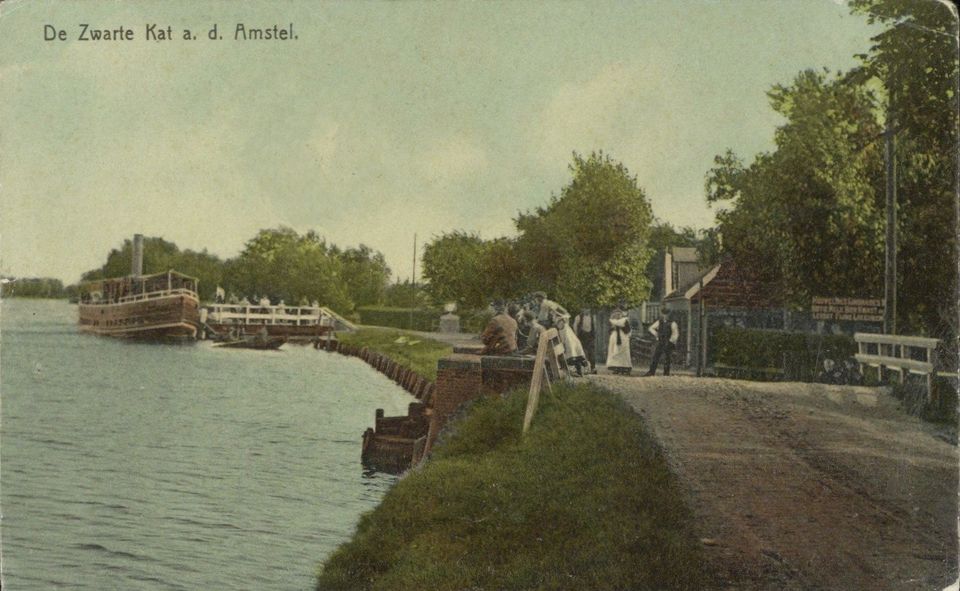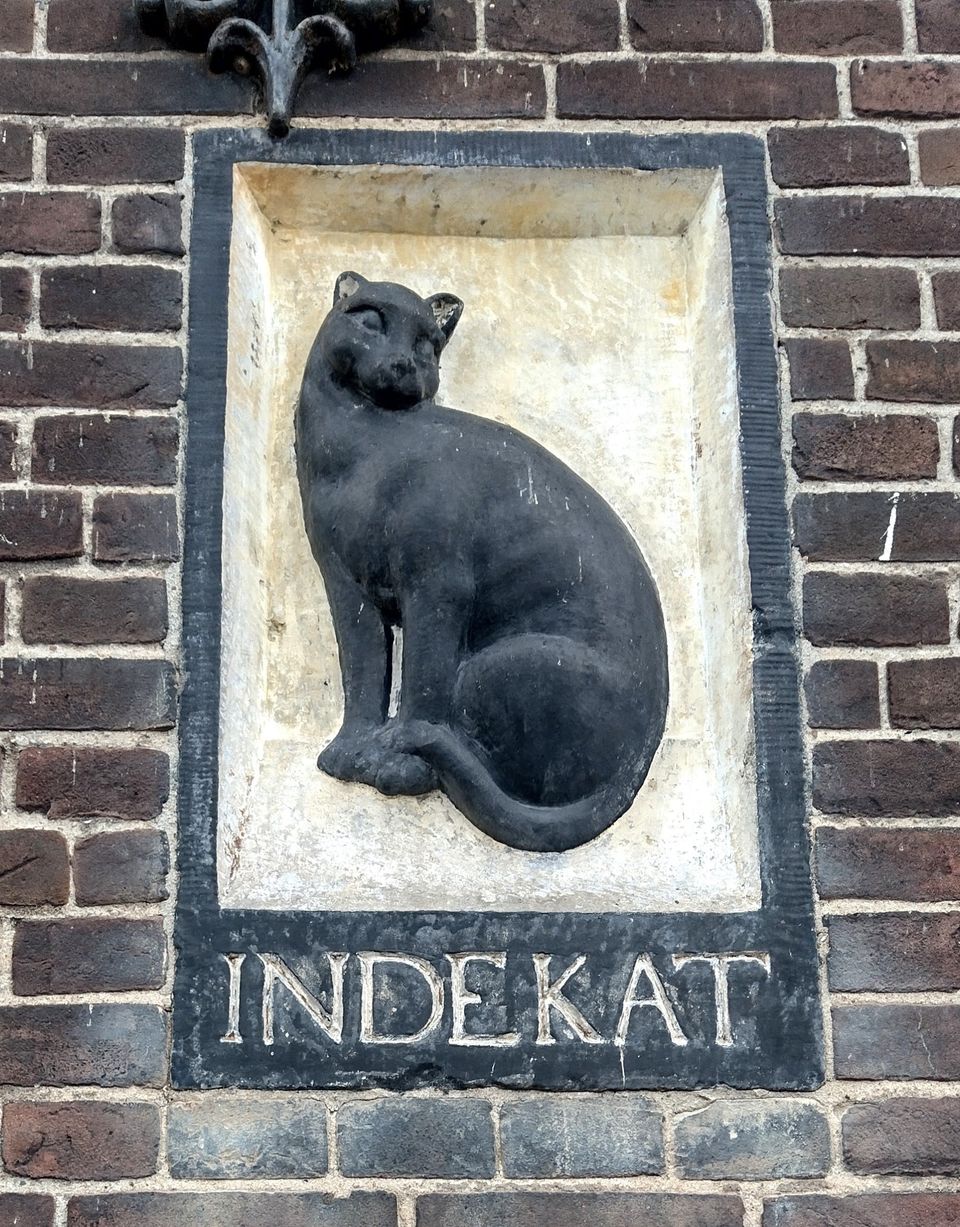
Paneel 7 - De Zwarte Kat (The Black Cat)
The area was originally called Weteringbrug and was later named after the café that stood here for centuries. The café was a welcome stop for the skippers and passengers who sailed up the Amstel from Amstelveen. In 1646, Gerrit Willemszoon Kat from Kudelstaart took over the café. He had a facade stone installed with the image of a black cat. This facade stone can still be seen in the house at Amsteldijk Zuid 101, where the café 'In de Kat' was originally located. With a later move to number 105, the name also changed.
Waardhuizen and Landlust
Along this part of the Amstel, there were a few …
The area was originally called Weteringbrug and was later named after the café that stood here for centuries. The café was a welcome stop for the skippers and passengers who sailed up the Amstel from Amstelveen. In 1646, Gerrit Willemszoon Kat from Kudelstaart took over the café. He had a facade stone installed with the image of a black cat. This facade stone can still be seen in the house at Amsteldijk Zuid 101, where the café 'In de Kat' was originally located. With a later move to number 105, the name also changed.
Waardhuizen and Landlust
Along this part of the Amstel, there were a few country estates in the 18th century. One of them was Waardhuizen, after which the Amstelveen residential area built around 1975 was named. Many characteristic farms can still be found on the Upper Land along the Amstel. A beautiful example is Landlust Farm at Amsteldijk Zuid 91. The farmyard with summer house has been well preserved and exudes a 19th-century agricultural atmosphere.
Back to the route





